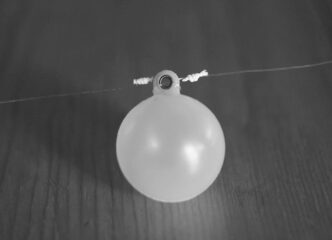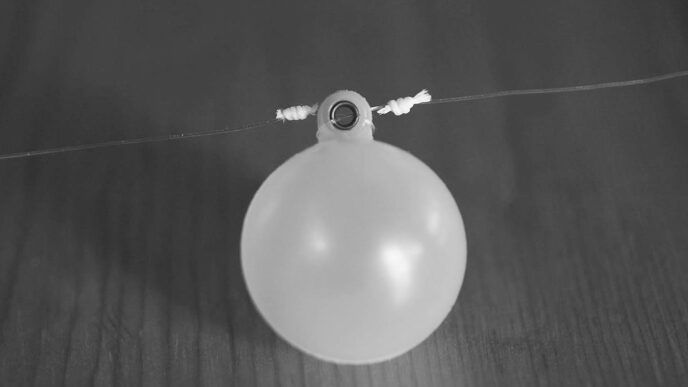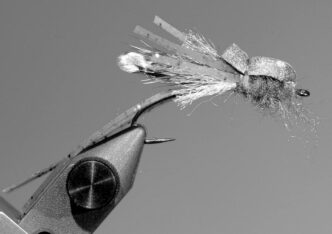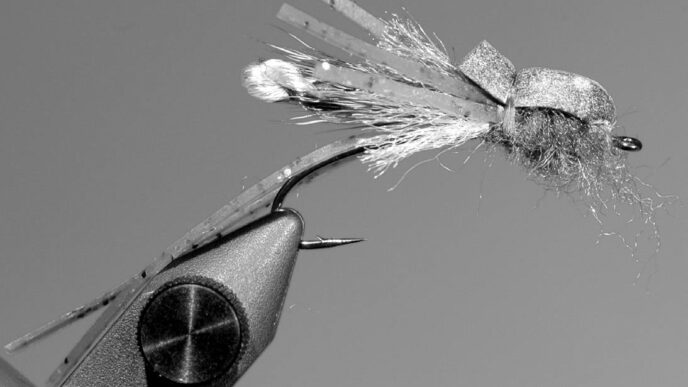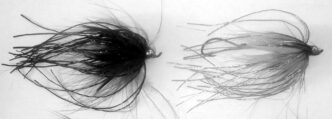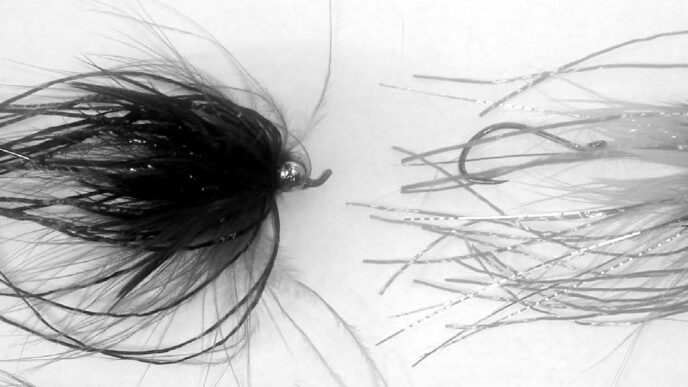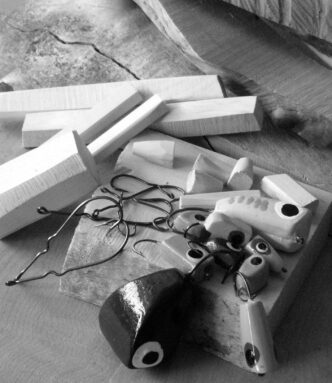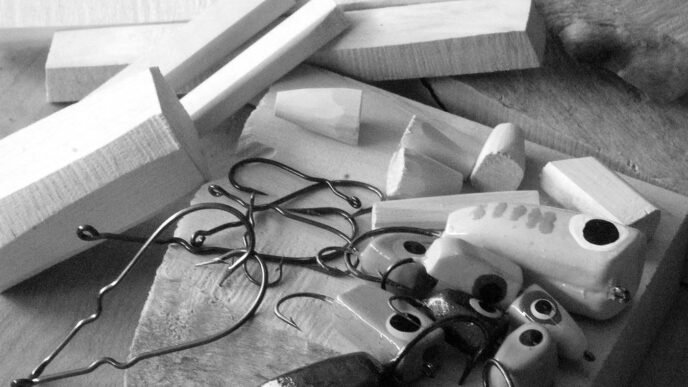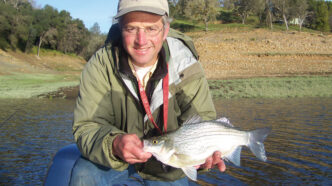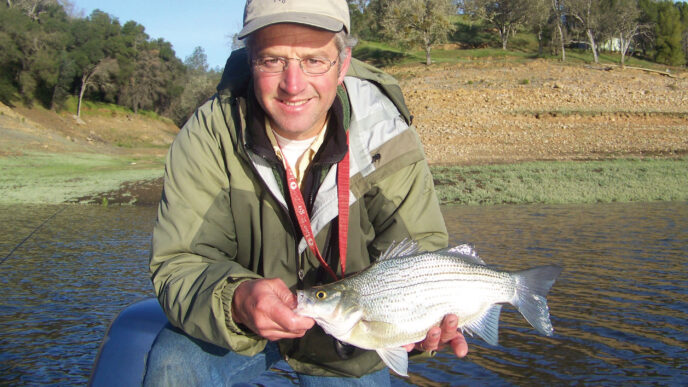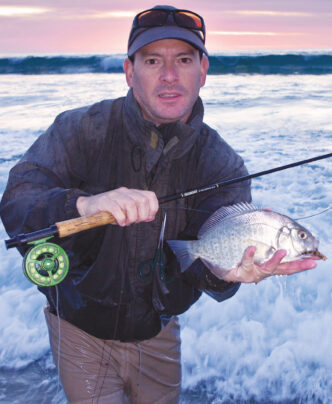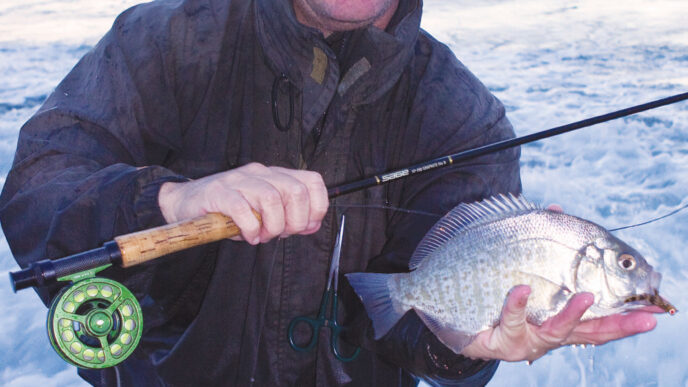Just when you think there are more than enough waders and wading boots on the market to provide variety and choice, along come more. This year, a double handful of neat new waders is on offer — all breathable, of course. Then there are those new replacements for felt-soled wading boots. When it comes to options for staying dry in the water, fly fishers have never had it so good.
Waders
The new Cloudveil Gros Ventre Wader ($200) is a fully seam-sealed model that packs into its own pocket. It’s billed as “a reliable backup wader or packable option when angling isn’t the priority but may become possible.” Angling not a priority? Who are they kidding?
The Snake River Pro Wader ($500) is Cloudveil’s top-of-the-line model, with five-layer Gore-Tex Pro Shell lower legs, three-layer upper legs, and ripstop stretch fabric on top. It has zippered pockets, built-in gaiters, and anatomically correct, compression-resistant neoprene booties. Very cool, though pricey.
If you’re looking for an option that is not as physically constraining as chest waders but, unlike hip boots, will let you wade more than creeks, Cloudveil’s Snake River Pro Wading Pant ($425) replaces last year’s Crystal Creek Wading Pant and uses three-layer Gore-Tex Pro Shell construction with leg seams set back 1.5 inches from the center for less abrasion. There are belt loops, if you prefer to hold the pants up that way, or you can use the removable suspenders. The water-resistant zipper means you may cringe a bit when you wade crotch deep, but the look of the pants is sufficiently like a pair of trousers at the bottom, with fabric cuffs hiding the gravel guards, that you can probably get away with wearing them into a café or burger joint. Everything’s a trade-off. They’re available in six sizes, from XS to XXL.
Simms’s new G3 Guide Pants ($379.95) are an addition to, rather than a replacement for last year’s convertible waders. As with other G3 waders, the new Guide Pants are made from Gore-Tex Pro Shell fabric, with five-layer legs and three-layer uppers and a patented leg-seam construction that Simms says not only adds to articulation, but provides enhanced comfort and durability. They have a built-in adjustable belt, a waterproof zipper, and two water-resistant side pockets. As with most G3 waders — it’s something that sets them apart from the competition — they’re available in 14 stock sizes and can also be ordered in custom sizes or with a bootfoot option . . . at additional cost, of course.
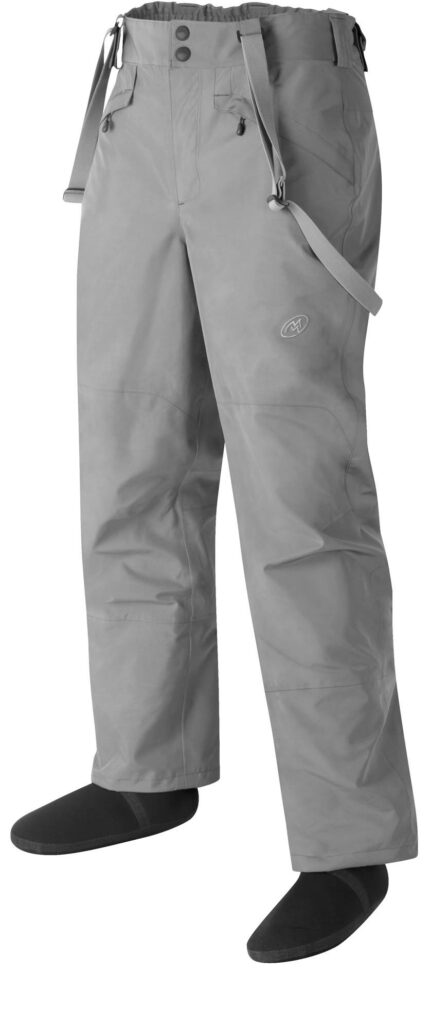
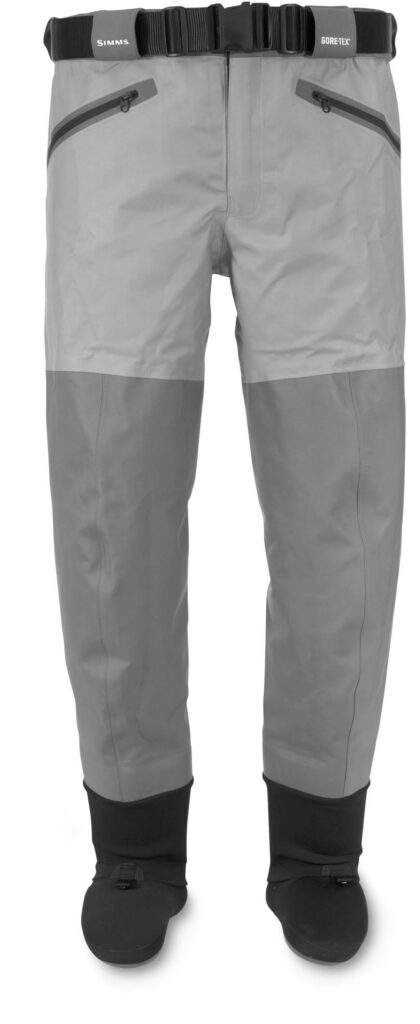
Chota has two new breathable wader offerings, both of which come in at modest price points. Rocky River Sock Foot Waders ($164.95) are made for the traveling angler in an extra-light three-layer fabric and are available in six sizes. Elk River Sock Foot Waders ($229.95), also available in six sizes, go to the other extreme with extra-rugged five-layer front leg and seat material and an adjustable suspender design that converts the waders from chest-highs to waist-highs. The insides of what Chota calls the “sock foots” on both models feature a special antimicrobial treatment that kills bacteria and reduces odor.
Orvis has added a rubber-soled bootfoot option to its River Guard Silver Label 3 wader ($329) and has come up with a very slick, lightweight, packable wader. Sonic Seam Travel and Pack Waders ($229) feature a new, patent-pending construction method that radio-welds seams, all of which are placed on the back of the wader to avoid abrasion. With no seams to wear or provide bulk, the resulting three-layer lightweight wader packs down easily for transport. Orvis waders are generally available in a dozen sizes that fit everyone from Jack Spratt to Fatty Arbuckle.
Wading Boots
The big news in this category is not so new, the trend having launched itself last year, but for those of you who haven’t been listening, felt is out, and sticky rubber is in. The pitch here is that felt soles, full of all those absorbent little nooks and crannies, are a home for and help spread invasive species such as didymo rock snot, whirling disease spores, and New Zealand mud snails, while rubber soles don’t. Fair enough. And every little bit helps. But let me briefly channel my inner killjoy.
Felt-soled boots certainly pick up more from a river and its bottom than rubber and are a pain to clean after every trip to prevent nasty hitchhikers from spreading. So if we can make it easy on ourselves by just changing boots, that’s a win-win, right? But think about it: Invasives can still hitch a ride in seams, sole welts, and boot tongues, which means we need to treat rubber-soled boots with the same care as we do felt. That means immersion in an agent such as Formula 409, or overnight freezing — something to kill the little baddies — followed by a thorough drying of the boot. The only folks who can probably get away without some sort of rigorous disinfecting of their boots are those who fish only one piece of water. How many of us can say that?
Then there’s the other important issue: Do the new soles work as well as felt? Numerous field tests suggest sticky rubber soles are decent, but without iron or tungsten studs screwed into the rubber to provide additional bite, they don’t provide acceptable traction on many hard, slick surfaces. That was true in some places for felt, as well — the North Umpqua, for example — but felt alone is generally a bit better than uncleated sticky rubber. If we buy into the notion that sticky rubber is all we need, many of us will be doing a lot of inadvertent wet wading.
Is there any alternative to buying new boots? It used to be that when I wore out a pair of felt soles and the uppers were still good, I had the boots resoled. Today, as far as I can see, only Aqua Stealth seems to have sticky-rubber resoling kits available (studded or unstudded), and only a few shoe repair shops install them, including Rocky Mountain Resole (http://www.rmresole.com/wading.html). Then again, the cost of resoling ($50 to $75, plus shipping) may make you think you might want to buy new boots anyway.
OK, enough with the skepticism. The sticky rubber soles available today are already better than the first ones that came on the market a decade ago, and no doubt the lab geeks are hard at work coming up with even better designs. Moreover, the technology behind the boot uppers themselves is also sufficiently improved over what was available 10 years ago to make for better fit, support, and comfort. What’s also true is that cleated rubber soles are much more comfortable than felt when hiking a river trail or wading sandy or graveled bottoms. So if you feel you need to do as much as you can to limit the spread of invasives or only want a pair of new boots, just keep in mind that you still need to clean and dry them thoroughly after use. You may also want to add cleats or studs, something that won’t be difficult, since just about every wading boot company offers them as an option, though generally at additional cost.
One boot that may not need the cleat treatment is Redington’s Eco Grip Rubber Soled Wading Boot $129.95), which won a Dealer’s Choice Award at the 2009 Fly Fishing Retailer show. The boot is a sturdy-looking critter, with a rubber toe cap and welt. The soles are heavily lugged and also “siped,” a term that describes minute slits in the lugs that open and close when under walking or wading pressure, enhancing their grip on the bottom The lugs and siping are an offshoot of the Tactical Rubber Technology designed for Navy Seals. Whether they’ll work on the Pit or the North Umpqua is yet to be determined. And will those sipes harbor invasives?
Orvis has three new rubber-soled wading shoes for 2010, all of which are provided with removable tungsten-carbide studs at no additional charge. River Guard Wading Boots with Vibram Eco-Trax soles can be had for as little as $119 for the entry-level Navigator version. The Easy On version ($179) is substantially more boot and features a locking speed-lace system. The Ultralight version ($159) is about 30 percent lighter than the Easy On. Orvis’s new tungsten-carbide cleats are available for separate purchase and can be used with the soles of other brand boots whose midsole depth is one-half inch or greater ($24.95 for a pack of 20 cleats).
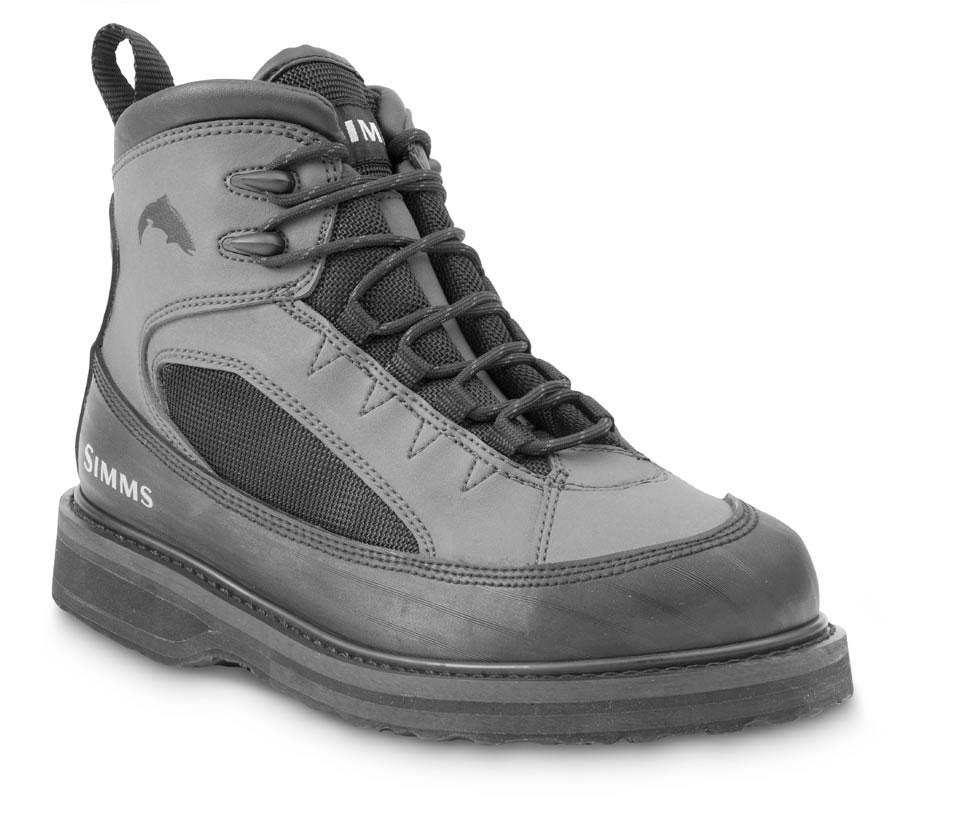
Simms introduced a bunch of new boots with Vibram StreamTread rubber soles in 2009. For 2010, they’ve updated the tread pattern and come up with some bigger add-on cleats. The new Hardbite Star Cleats offer increased surface area over the still-available Hardbite Studs, and like the studs, screw into StreamTread soles for better traction. There’s also a new, less-expensive Simms Blackfoot Wading boot ($99) that uses a different Vibram sticky rubber sole. Blackfoots will accept Hardbite studs, but not the new cleats, which are designed specifically for the top-end StreamTread soles.
L. L. Bean’s Gray Ghost Wading Shoe ($119 to $139) uses Aqua Stealth rubber soles that come either with or without studs, depending on your level of optimism. The design features quick-drying materials and a minimal number of crevasses and catch points for debris and invasives, is light in weight, and features a generous boot opening for easy on, easy off. Cloudveil’s new Snake River IdroGrip Wading Boot ($160) uses Vibram Link rubber soles with a special IdroGrip compound. The boots are synthetic leather with poly mesh uppers and feature massive rubber toe caps. They look light and durable, but I don’t see any provision for studs.
Chota has three new wading shoes billed with what they’re terming “Felt Alternative.” Caney Fork boots ($149.95) feature a specially compounded dual-density rubber outsole that accepts Chota’s steel or carbide-tipped cleats for additional traction. In addition to removable EVA insoles, there is a quarter-inch foot-bed liner that, when removed, makes it easy to accommodate neoprene stocking feet and heavy socks. A quick-lace system with full tongue gusset allows for easy on, easy off. The Chota Middle Fork ($119.95) is a neat low-top version of the Caney Fork that looks remarkably like a performance street shoe, accepts studs, and is intended for wet wading. The Rocky River Wading Boot ($94.95) features a soft rubber airbob sole, different from that on Caney Fork and Middle Fork, but still with built-in cleat receptacles. Rocky Rivers come with steel cleats, but accept Chota’s carbide-tipped cleats. Caney Fork and Middle Fork boots come cleatless, but you can buy the cleats separately at $19.95 for a pack of 20 carbides or $7.50 for a pack of 20 carbides or $7.50 for steel.






